I’ve battled mold in my home more times than I care to admit, and let me tell you, MOLD ARMOR Rapid Clean Remediation is a lifesaver. This isn’t just another cleaner—it’s a one-step powerhouse that kills, cleans, and prevents mold and mildew in minutes.
Whether you’re dealing with stubborn grout stains or sneaky mold on your siding, this product delivers results without the backbreaking scrubbing. Trust me, if you’re tired of mold creeping into your space, you’ll want this in your cleaning arsenal.
It’s effective, fast, and worth every penny.
My Experience With MOLD ARMOR Rapid Clean Remediation
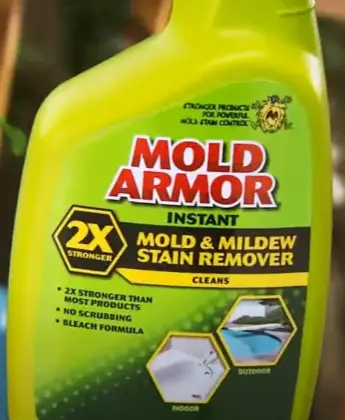
Picture this: I’m staring at my bathroom grout, once a crisp white, now a patchy mess of black and green mold.
My rental apartment’s lack of a proper bathroom fan didn’t help, and no amount of elbow grease with a scrub brush could fix it.
I tried every cleaner under the sun—vinegar, baking soda, even that trendy pink paste everyone raves about.
Nothing worked. Then, I stumbled across MOLD ARMOR Rapid Clean Remediation at my local hardware store, and it felt like the universe was throwing me a lifeline.
I grabbed the 32-ounce spray bottle, popped it open, and got to work. The instructions were straightforward: pre-clean heavily soiled areas, spray until wet, wait a bit, and rinse or wipe away.
No scrubbing required?
I was skeptical but desperate. I sprayed the grout generously, making sure every crevice was soaked. The smell hit me immediately—a strong, bleach-like odor that screamed “this means business.”
I cracked a window, put on a mask (a lesson learned from past chemical-cleaner mishaps), and let it sit for about 10 minutes while I sipped some coffee.
When I returned, I was floored. The mold was practically melting away. The grout looked cleaner than it had in years, with only a few stubborn spots remaining.
I gave those a second application, and by the next day, my bathroom looked like it belonged in a magazine. I also tested it on the cinder block walls in my garage, where mold tends to creep in during humid summers. Same deal—spray, wait, rinse, and gone.
It was almost too easy. The fact that it worked so quickly without me breaking a sweat felt like a small miracle. My only regret? Not taking before-and-after photos to show off the transformation.
Pros of MOLD ARMOR Rapid Clean Remediation
- Lightning-Fast Results
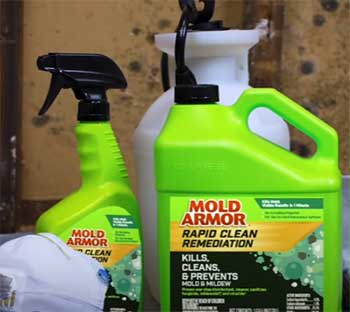
Let’s talk about speed. MOLD ARMOR doesn’t mess around.
In just one minute, you can see mold and mildew start to vanish.
I sprayed it on my shower tiles, and by the time I finished brushing my teeth, the stains were already fading.
For tougher spots, like my grout, waiting 10 minutes did the trick.
This kind of instant gratification is rare in the world of cleaning products, and it’s a huge win for anyone who doesn’t have hours to spend scrubbing.
- No Scrubbing Needed
I’m not exaggerating when I say this product saved my arms. Scrubbing mold off surfaces is exhausting, and I’ve ruined more than one sponge trying to tackle it. MOLD ARMOR’s no-scrub formula is a game-changer.
You spray it, let it sit, and wipe or rinse it away. It’s like the product does the heavy lifting for you. I used it on my vinyl siding, and the mold practically slid off with a quick rinse from the garden hose. If you hate scrubbing as much as I do, this is your new best friend.
- Versatile Across Surfaces
One thing I love about this product is how versatile it is. It’s designed for hard, non-porous surfaces like acrylic, sealed fiberglass, glass, stainless steel, and even sealed granite.
I’ve used it in my bathroom, garage, and even on my patio furniture, and it worked like a charm every time. It’s not just a bathroom cleaner—it’s a whole-house mold fighter. Knowing I can grab one bottle for multiple jobs makes my life so much easier.
- Prevents Future Mold Growth
MOLD ARMOR doesn’t just clean; it helps keep mold at bay. By spraying it on surfaces every seven days, you can inhibit mold and mildew growth. I’ve been using it on my bathroom tiles weekly, and I haven’t seen those pesky black spots return.
It’s like putting a protective shield on your surfaces, which is a huge relief in a humid climate like mine. This preventative feature makes it stand out from other cleaners that only tackle existing mold.
- Kills Bacteria and Viruses
Beyond mold, this stuff is a beast at killing 99.9% of bacteria and viruses, including heavy hitters like Influenza A H1N1 and Human Coronavirus. In today’s world, that’s a big deal.
I feel better knowing my surfaces aren’t just clean but disinfected. Whether it’s my kitchen countertops or bathroom sinks, I trust MOLD ARMOR to keep my home safer.
Cons of MOLD ARMOR Rapid Clean Remediation
- Strong Bleach Odor

Let’s be real—the smell is intense.
MOLD ARMOR’s bleach-based formula packs a punch, and not the pleasant kind.
When I first sprayed it in my bathroom, I had to open every window and turn on a fan to avoid a headache.
If you’re sensitive to strong chemical odors, you’ll want to wear a mask and ensure good ventilation.
It’s not a dealbreaker, but it’s something to prepare for.
- Not for Porous Surfaces
Here’s where I hit a snag. MOLD ARMOR is fantastic for hard, non-porous surfaces, but it’s not meant for porous materials like drywall or untreated wood. I learned this the hard way when I tried it on a small patch of moldy drywall in my basement.
It didn’t penetrate deep enough to kill the mold beneath the surface, and I ended up needing professional help for that job. If you’ve got mold on porous surfaces, you’ll need a different solution.
- Potential for Surface Damage
You’ve got to be careful with certain materials. The label warns that prolonged contact with vinyl or rubber surfaces can cause damage, so you need to rinse those within 15 minutes.
I almost forgot this when cleaning my patio furniture and noticed a slight discoloration on a vinyl cushion. It’s not a huge issue if you follow the instructions, but it’s something to keep in mind if you’re working on delicate surfaces.
- Leaky Spray Bottles
I’ve read some complaints about the spray bottle leaking, and I experienced this myself. When I used the 32-ounce trigger spray, a bit of the product dribbled down the bottle, making my hands feel slimy even after washing.
It’s not a dealbreaker, but it’s annoying, especially when you’re trying to be precise. I ended up pouring some into a different sprayer for better control.
Tips For Using MOLD ARMOR Rapid Clean Remediation
- Pre-Clean Heavily Soiled Surfaces
Before you even think about spraying MOLD ARMOR, take a minute to pre-clean any heavily soiled areas. I learned this the hard way when I tried to tackle some grimy patio furniture without wiping off the dirt first.
The product didn’t work as well because the mold was buried under layers of gunk. A quick wipe-down with a damp cloth or sponge ensures MOLD ARMOR can penetrate and do its job effectively. It’s an extra step, but it makes a big difference in the results.
- Ventilate Your Space
I can’t stress this enough: ventilate, ventilate, ventilate. The bleach-based formula is potent, and the fumes can be overwhelming. When I used it in my bathroom, I opened every window and turned on a fan.
If you’re sensitive to smells or have respiratory issues, wear a mask. It’s not just about comfort—it’s about safety. Trust me, you don’t want to be coughing through your cleaning session.
- Follow the Timing Instructions
MOLD ARMOR is all about timing. For sanitizing, let it sit for 10 seconds. For disinfecting or killing mold, wait 30 to 60 seconds. For stain removal, give it 10 minutes.
I set a timer on my phone to keep track, and it’s saved me from rinsing too early or leaving it on too long. Following these guidelines ensures you get the full benefits of the product without risking surface damage.
- Rinse Sensitive Surfaces Quickly
If you’re using MOLD ARMOR on vinyl, rubber, or similar materials, don’t let it sit for too long. The label says to rinse within 15 minutes to avoid damage, and I learned this lesson when I left it on a vinyl cushion a bit too long and noticed some fading.
Keep a damp cloth or hose nearby to rinse quickly, and you’ll avoid any mishaps.
- Apply Weekly for Prevention
To keep mold from coming back, make MOLD ARMOR part of your routine. I spray my bathroom tiles every seven days, letting it air dry to create that protective barrier. It’s become second nature, like wiping down my counters.
This small habit has kept my bathroom mold-free for months, even in humid weather. Just make sure to pre-clean first so the product can work its magic.
- Store and Handle Safely
This stuff is powerful, so treat it with respect. I store my bottle in a cool, dry place away from kids and pets. The label warns about eye irritation and skin contact, so I always wear gloves and keep a towel handy in case of spills.
If you’re using the spray bottle, check for leaks before you start—I’ve had a few drips that made a mess. Pouring it into a different sprayer can help if the bottle’s nozzle is finicky.
Comparison of MOLD ARMOR Rapid Clean Remediation With Other Brands
- MOLD ARMOR Vs. Clorox Mold & Mildew Remover
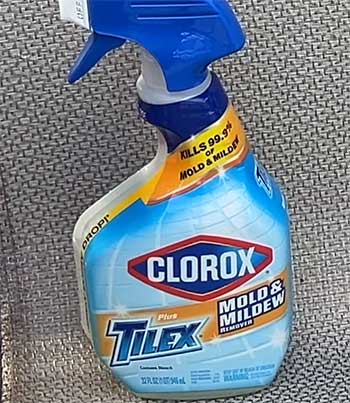
When I stack MOLD ARMOR against Clorox Mold & Mildew Remover, it’s a close race, but MOLD ARMOR pulls ahead for me.
Both are bleach-based and kill 99.9% of mold and mildew, which I’ve tested on my bathroom tiles.
Clorox does a solid job, but it often requires scrubbing for tougher stains, which is a pain compared to MOLD ARMOR’s no-scrub formula.
I used Clorox on my shower curtain, and it worked, but I had to rinse it multiple times to avoid residue.
MOLD ARMOR’s preventative feature—spraying weekly to inhibit mold growth—gives it an edge. Clorox lacks that long-term protection, so I found myself cleaning more often. For speed and ease, MOLD ARMOR wins, though Clorox is a reliable backup if you don’t mind a bit of elbow grease.
- MOLD ARMOR Vs. RMR-141 Disinfectant Spray Cleaner
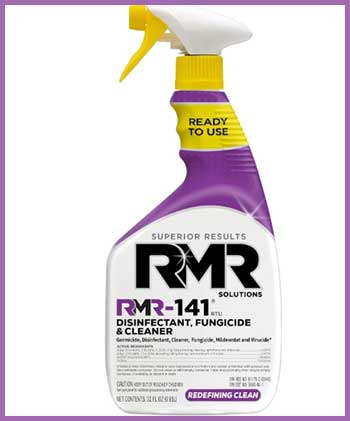
RMR-141 is a beast for heavy-duty mold jobs, especially on porous surfaces like carpets or upholstery.
I tried it on a moldy rug in my basement, and it worked after a couple of applications, but it wasn’t as user-friendly as MOLD ARMOR.
RMR-141 required scrubbing and multiple sprays for stubborn spots, which was exhausting compared to MOLD ARMOR’s spray-and-wait approach.
On hard surfaces like my bathroom grout, MOLD ARMOR was faster and more effective in one go.
RMR-141’s strength is its ability to tackle porous materials, but for everyday hard-surface cleaning, MOLD ARMOR’s versatility and speed make it my go-to. If your mold problem is on drywall or fabric, RMR-141 might be better, but for most home jobs, MOLD ARMOR is simpler.
- MOLD ARMOR Vs. Lysol Mold & Mildew Remover
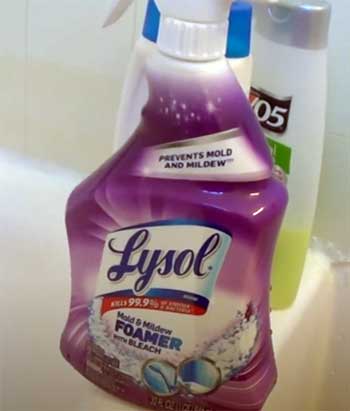
Lysol Mold & Mildew Remover is another bleach-based option I’ve used, particularly on my kitchen sink area where mold sneaks in around the edges.
It’s effective and widely available, but it doesn’t match MOLD ARMOR’s speed or preventative power.
With Lysol, I noticed I had to let it sit longer—sometimes up to 15 minutes—and scrub for tougher stains, which was frustrating.
MOLD ARMOR’s one-minute visible results blew me away in comparison.
Lysol also doesn’t emphasize mold prevention like MOLD ARMOR’s weekly application does, so I found myself battling recurring mold more often. Lysol is great for quick disinfecting and has a slightly less intense smell, but for mold-specific tasks, MOLD ARMOR’s efficiency and long-term protection make it the better choice for me.
Why MOLD ARMOR Stands Out?
What sets MOLD ARMOR apart is its all-in-one approach. It’s not just a cleaner—it’s a disinfectant, sanitizer, and mold inhibitor rolled into one.
I’ve used other products that clean well but don’t prevent mold from returning, which means you’re stuck in a cycle of constant cleaning. With MOLD ARMOR, that weekly spray keeps things under control, saving you time and effort.
Plus, it’s ready to use right out of the bottle, so there’s no mixing or diluting required. For someone like me who just wants to get the job done, that’s a huge plus.
Another thing I appreciate is how accessible it is. You can find MOLD ARMOR at places like Home Depot, Lowe’s, or even online at Walmart or Amazon. The price is reasonable—around $40 for a gallon, which lasts a long time if you’re using it for spot treatments.
Compared to hiring a professional or replacing mold-damaged materials, it’s a steal. I’ve even recommended it to friends who were skeptical at first but came back raving about how easy it was to use.
Frequently Asked Questions (FAQ)
Absolutely, it works like a charm. I’ve used it on everything from bathroom grout to garage walls, and it tackles mold and mildew with ease. Spray it on, wait a minute or two, and watch the stains disappear. For tougher spots, a second application might be needed, but it’s rare. The key is to follow the instructions and pre-clean heavily soiled areas. It’s not a cure-all for deep-rooted mold in porous materials, but for hard surfaces, it’s a rockstar.
It’s fast—really fast. For killing mold and mildew, you’ll see results in as little as one minute. For stubborn stains, letting it sit for 10 minutes works wonders. I’ve found that most jobs are done within this timeframe, though heavily stained areas might need a second round. The beauty is you don’t have to scrub, so the wait is worth it. Just set a timer and let the product do its thing.
The short answer? Be cautious. The bleach-based formula has a strong odor that can irritate your lungs if you’re not careful. I always use it in a well-ventilated area, with windows open and a fan running. If you’re sensitive to fumes, wear a mask. The label warns about moderate eye irritation and skin contact, so it’s best to avoid breathing it in directly. Ventilation is your friend here.
It depends on the surface and what you’re doing. For sanitizing or disinfecting, you can wipe it off with a damp cloth after the required time. For mold and mildew removal, rinsing with water or wiping with a sponge is recommended, especially on vinyl or rubber surfaces to prevent damage. I always rinse my bathroom tiles to avoid residue buildup. For prevention, you can let it air dry after spraying. Just check the label for specific instructions based on your use case.
Wrapping Up
If mold’s been creeping into your life, MOLD ARMOR Rapid Clean Remediation is your secret weapon. It’s fast, effective, and takes the hassle out of mold removal with no scrubbing required.
From bathroom tiles to outdoor siding, it tackles mold and mildew while preventing future growth. For less than $40, you’re getting a cleaner, disinfectant, and mold inhibitor in one.
Don’t let mold win—grab a bottle, follow the simple instructions, and watch those stains disappear. Your home deserves to be clean and safe, and MOLD ARMOR delivers.
